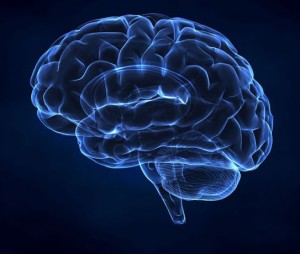Human Brains Have No Gender

A study published last Monday in the Proceedings of the National Academy of Sciences (PNAS) reveals that brains aren’t distinctly “male” or “female.” Scientists from Tel-Aviv University hypothesized that if the brain is truly gendered, MRI scans would reveal consistent structural differences between sexes. Instead, they discovered that brain features vary across a spectrum like a mosaic. The study concludes that brains are not classifiable as male or female, but instead vary by the features of each individual.
The researchers analyzed MRI scans of 1,400 people and found that finding a set of “male-like” and “female-like” features is more common than finding specifically “male” or “female” features. To determine which features were more “male-like” and “female-like,” they categorized the features based on what sex they appeared in more consistently. The researchers examined differences in volume of gray matter and white matter regions and did find several structural differences between male and female brains. But depending on which area of the brain they looked, between 23 and 53 percent of brains contained characteristics from both “male” and “female” categories while only 8 percent of brains were entirely at either end of the spectrum. In gray and white brain matter, brains were so variable that labeling features as “male” and “female” is practically meaningless.
Although these findings may seem obvious, it is important to recognize that this issue is still questionable to some. Gender expectations have long existed, and oftentimes difference in brain structure is used to justify gender inequality and segregation. The researchers note, “Whereas a categorical difference in the genitals has always been acknowledged, the question of how far these categories extend into human biology is still not resolved.” When faced with cultural expectations, it may be easier to believe that there are stark contrasts between brains in female-sexed bodies and brains in male-sexed bodies, but this new study forces us to challenge notions of gender by highlighting the complexity of pinning down its biological definition.
Daphna Joel, a psychology professor at Tel-Aviv University who led the study, acknowledges these implications in an article in The Guardian co-written with Cordelia Fine:
Our study demonstrates that although there are sex/gender differences in brain structure, brains do not fall into two classes, one typical of males and the other typical of females, nor are they aligned along a “male brain-female brain” continuum…We can see social issues more clearly when we stop viewing them through the distorting lens of sex categories, and start fully appreciating human variability and diversity.
The fact that all of our brains are consistent in their variability only reinforces the idea that we have the potential to transcend gender barriers, racial and ethnic barriers, religious barriers, and national divide, in order to form a society that reflects our status as many parts of one whole. As Joel says, “Is it time to let go of binary thinking and celebrate the fact that there are many different ways to be male, to be female, to be human?”
